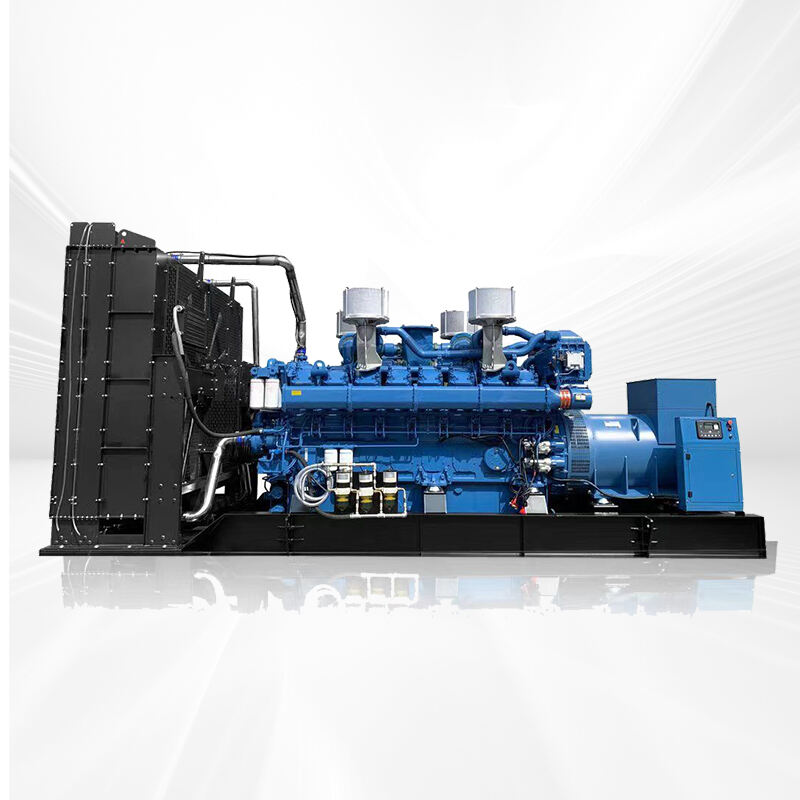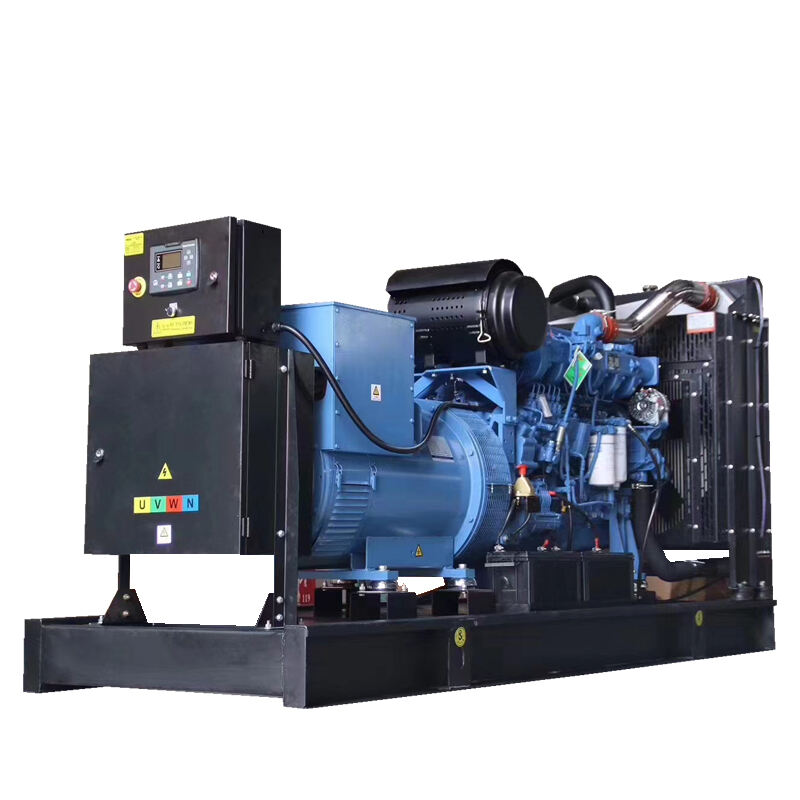How Does the Size of a Diesel Generator Affect Its Performance and Fuel Consumption?
The diesel generator is one of the most reliable power solutions in modern industries, residential settings, and off-grid applications. It provides backup electricity during outages, ensures continuous power for critical infrastructure, and supports remote operations where grid access is unavailable. While diesel generators are widely used across multiple sectors, many people overlook one critical aspect that directly impacts performance and operating costs: size.
The size of a diesel generator—measured primarily in terms of power output (kilowatts or megawatts) and engine capacity—plays a crucial role in determining how well it functions, how efficiently it consumes fuel, and how long it will last. Choosing the wrong size can lead to inefficiency, excessive fuel consumption, unnecessary maintenance, and even system failure.
This article explores how the size of a diesel generator influences performance and fuel consumption, offering insights into why correct sizing is essential for different applications.
Understanding Diesel Generator Sizing
A diesel generator’s size refers to its power capacity, which ranges from a few kilowatts for residential use to several megawatts for industrial facilities. Generator manufacturers design units to serve different loads, meaning that a generator must match the demand of the equipment or facility it powers.
If a diesel generator is undersized, it will be forced to work beyond its design capacity, leading to overheating, premature wear, and frequent breakdowns. Conversely, an oversized generator will operate underloaded, wasting fuel and reducing efficiency. Proper sizing ensures optimal fuel consumption, performance, and longevity.
The Relationship Between Size and Performance
1. Power Output and Load Handling
The larger the diesel generator, the greater its power output capacity. A high-capacity unit can handle more extensive loads, including industrial machinery, HVAC systems, and multiple buildings. However, when a generator is too large for its load, it often operates at a fraction of its rated capacity, leading to inefficiencies.
On the other hand, a smaller diesel generator running close to or beyond its rated load will strain the engine, leading to increased heat, reduced reliability, and shortened service life. Correct sizing ensures the generator handles the intended load without compromising performance.
2. Voltage Stability and Frequency Control
The size of a diesel generator affects its ability to maintain stable voltage and frequency during operation. Larger generators generally provide better voltage regulation and frequency control, especially under sudden load changes. This is critical in applications such as hospitals or data centers, where even minor fluctuations can damage sensitive equipment.
Smaller generators may struggle with load spikes, leading to voltage dips or frequency variations. In such cases, equipment performance may be affected, or protective shutdowns may occur.
3. Reliability and Lifespan
An oversized diesel generator that consistently runs under low loads can experience a condition called wet stacking, where unburned fuel accumulates in the exhaust system, causing carbon deposits and reduced efficiency. This can shorten the generator’s lifespan and increase maintenance costs.
An undersized generator, meanwhile, is more prone to breakdowns due to constant overloading and overheating. Both scenarios highlight how mismatched sizing negatively affects long-term reliability and durability.

The Relationship Between Size and Fuel Consumption
Fuel consumption is one of the most critical operational costs of running a diesel generator. The size of the generator directly affects how much diesel fuel is consumed during operation.
1. Fuel Efficiency at Optimal Load
A diesel generator is most fuel-efficient when operating between 70% and 80% of its rated capacity. At this range, combustion is complete, and the engine runs smoothly, converting fuel energy into electrical power efficiently.
If a generator is too large for its load and runs at low capacity (say 30% or less), it consumes more fuel per kilowatt-hour produced. Similarly, a small diesel generator pushed to its limits burns fuel inefficiently, as it struggles to meet demand.
2. Idle and Low-Load Consumption
Large diesel generators consume significant amounts of fuel even when running under minimal loads or at idle. This makes them inefficient for applications with fluctuating or light load demands. In contrast, smaller generators consume less at idle but may not provide sufficient backup capacity during peak loads.
3. Fuel Costs in Long-Term Operation
Fuel costs can be one of the largest expenses associated with operating a diesel generator. For organizations running generators as primary power sources in remote locations, oversized units can dramatically increase operational costs. Conversely, an undersized unit may require frequent refueling due to inefficiency and higher fuel burn under heavy load.
Choosing the right size ensures fuel costs are minimized without compromising reliability.
Consequences of Improper Sizing
Undersized Diesel Generators
Overheating and engine stress.
Excessive fuel consumption under load.
Frequent breakdowns and reduced lifespan.
Inability to handle peak load demands.
Oversized Diesel Generators
High idle fuel consumption.
Wet stacking due to incomplete combustion.
Increased maintenance and servicing costs.
Unnecessary capital investment and operating expenses.
Both extremes lead to higher costs, reduced performance, and operational inefficiencies.
Best Practices for Diesel Generator Sizing
1. Conduct a Load Analysis
Before selecting a diesel generator, conduct a detailed load analysis of the equipment or facility. Identify peak load demands, average load requirements, and potential future expansions. This ensures the generator is sized appropriately for both current and anticipated needs.
2. Match Generator Size to Application
Residential Use: Small to medium-sized diesel generators (5 kW to 20 kW) are usually sufficient for households.
Commercial Buildings: Medium-sized generators (20 kW to 200 kW) are often required for offices, retail stores, or schools.
Industrial Use: Large-scale generators (200 kW to several MW) are necessary for factories, data centers, and hospitals.
3. Factor in Load Diversity
Loads vary across time. A facility may not require all systems to run simultaneously. Understanding load diversity prevents overestimating capacity requirements and avoids unnecessarily oversized generators.
4. Consider Parallel Systems
Instead of relying on a single large diesel generator, some facilities benefit from running multiple smaller units in parallel. This allows flexibility, redundancy, and improved fuel efficiency, as generators can be switched on or off depending on demand.
5. Regular Maintenance and Monitoring
Even with correct sizing, regular maintenance is essential to ensure performance and fuel efficiency. Monitoring fuel consumption, load performance, and emissions helps optimize operation and detect inefficiencies early.
Real-World Examples
Remote Mining Operations
Mining camps often require high-capacity diesel generators due to heavy machinery and continuous operation. Oversizing, however, can be costly. Some mines have adopted modular generator systems, where multiple units operate in parallel, providing flexibility to scale output based on demand while optimizing fuel consumption.
Data Centers
Data centers need highly stable voltage and frequency control. Correctly sized diesel generators ensure seamless power supply without fluctuations. Oversizing is common but leads to inefficiencies; thus, load-sharing systems are often preferred.
Residential Communities
In off-grid residential developments, smaller diesel generators may be used. Undersized systems often fail during peak usage, while oversized systems consume unnecessary fuel. Hybrid solutions combining diesel generators with solar panels and battery storage have emerged as cost-effective alternatives.
The Role of Hybrid Systems
Modern energy solutions increasingly combine diesel generators with renewable energy sources and battery storage. Hybrid systems reduce the reliance on oversized diesel generators, ensuring they operate closer to their optimal load range. This improves fuel efficiency, reduces emissions, and extends the lifespan of the equipment.
For example, during the day, solar panels may supply most of the power, while the diesel generator operates only when renewable energy is insufficient. This approach ensures the generator remains properly loaded when in use, minimizing inefficiencies.
Future Outlook
Advancements in diesel engine technology are improving fuel efficiency, emissions control, and load management capabilities. Smart diesel generators equipped with digital controls can adjust output dynamically, ensuring optimal performance regardless of load changes.
At the same time, the integration of diesel generators into hybrid systems is becoming more common, reducing fuel consumption and environmental impact. As industries move toward greener solutions, the diesel generator will continue to play a role, but with greater emphasis on efficiency, correct sizing, and sustainable operation.
Conclusion
The size of a diesel generator has a profound effect on its performance and fuel consumption. An undersized unit leads to overheating, excessive fuel burn, and reduced reliability, while an oversized generator wastes fuel, suffers from wet stacking, and incurs unnecessary costs. Proper sizing, based on load analysis and application requirements, ensures optimal efficiency, reliable performance, and manageable operating costs.
Best practices such as load diversity analysis, parallel generator systems, and integration with renewable energy sources further enhance efficiency and sustainability. In a world increasingly focused on cost reduction and environmental responsibility, correctly sizing a diesel generator is not just a technical consideration but a critical operational and financial decision.
FAQ
What is the most fuel-efficient operating range for a diesel generator?
A diesel generator is most fuel-efficient when running at 70–80% of its rated load.
What happens if a diesel generator is too small for the load?
It will overheat, consume more fuel, and experience frequent breakdowns due to overload stress.
Can an oversized diesel generator cause problems?
Yes, running underloaded leads to fuel inefficiency, wet stacking, and increased maintenance costs.
How do I know what size diesel generator I need?
Conduct a load analysis of your equipment, factor in peak demand, and consider future expansion to determine the correct size.
Are multiple smaller generators better than one large diesel generator?
In many cases, yes. Parallel systems allow for flexibility, redundancy, and better fuel efficiency by matching the number of active generators to current demand.
Table of Contents
- How Does the Size of a Diesel Generator Affect Its Performance and Fuel Consumption?
- Understanding Diesel Generator Sizing
- The Relationship Between Size and Performance
- The Relationship Between Size and Fuel Consumption
- Consequences of Improper Sizing
- Best Practices for Diesel Generator Sizing
- Real-World Examples
- The Role of Hybrid Systems
- Future Outlook
- Conclusion
-
FAQ
- What is the most fuel-efficient operating range for a diesel generator?
- What happens if a diesel generator is too small for the load?
- Can an oversized diesel generator cause problems?
- How do I know what size diesel generator I need?
- Are multiple smaller generators better than one large diesel generator?

